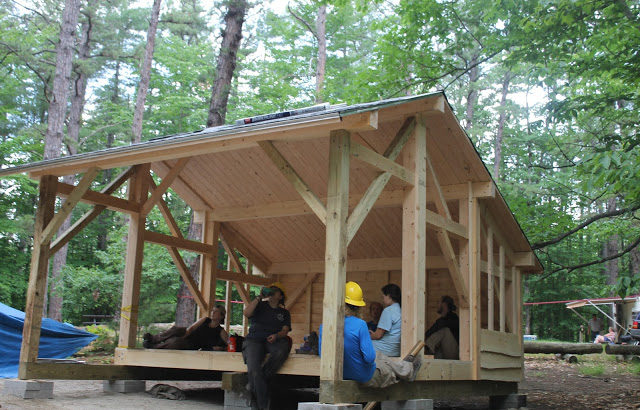Special post from the SCA NH Corps, Conservation Crew (by Annie Cohen):
During training two weeks ago, some of us Conservation Stewards were mystified by the concept of when to measure precisely to the T and when a cut or measurement was deemed “close enough.” Our boss referred to this phenomenon as Rustic Carpentry. The “precise” versus “we can live with it” measurements are a strange line to walk. A wrong measurement during the very first steps of laying the foundation can offset the entire project, but a half an inch difference in the diagonals of our timber frame box is ok to move forward with. This level of discernment ability will hopefully come to us with time. For now, our crew seems to be making do (ahem we have almost completed two beautiful camping shelters!) with our combined skills, logic, measuring tape, and pencils.
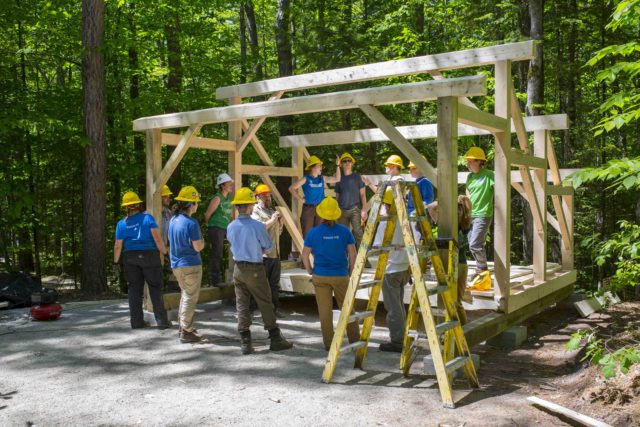
Our crew of seven split into two different groups for a good part of our hitch because we had to complete our first shelter left over from training and build a second shelter entirely from scratch. That split left Max, Chrissie and I to start and finish the entire foundation of Shelter 2. We were completely on our own, with only our detailed notes from training and our memories to guide us.
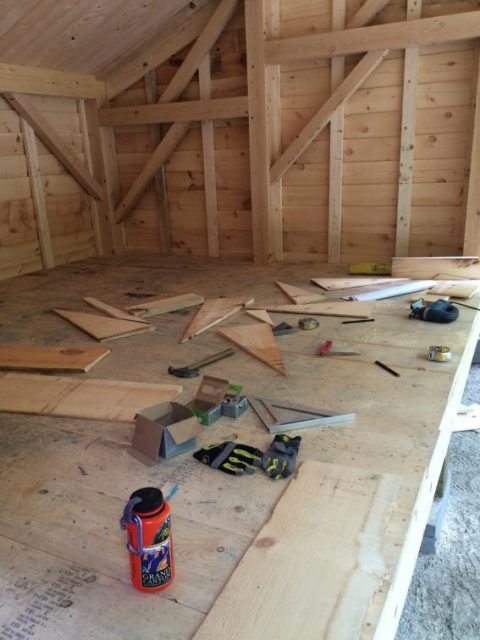
I wish I had kept track of the amount of times we said “Is it level?” during the laying of the foundation. My guess is upwards of 200. The foundation leveling process is the most important time to be precise, as least to my understanding. We used a transit to find out how to make our foundation perfectly square, and to measure how high each foundation block had to be to make the entire structure level. The transit was simultaneously our best friend and worst enemy. If the transit gets nudged and gets unleveled without anyone noticing it could mean that we’d have to take all of our measurements all over again, which would be agonizing because laying our foundation in its entirety took two whole days. Luckily we kept each other in check and our transit remained a close friend. It’s been locked in the trailer for almost a week now and I sort of miss it, come to think of it. Here is a picture of us hugging the transit. If you look closely, we are hugging it without touching it at all! We must keep it level!!!
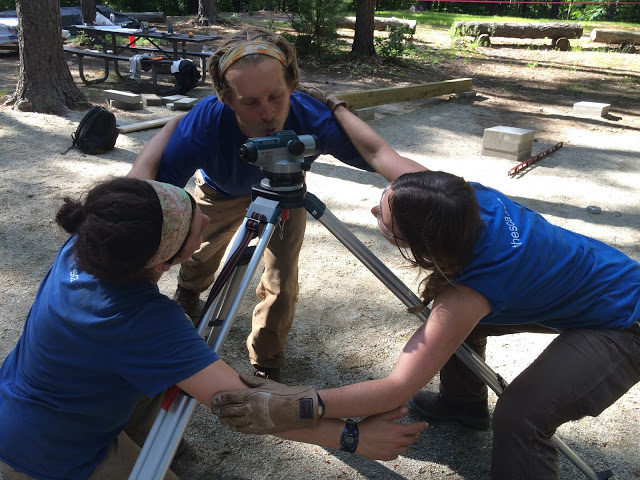
We have a bunch of fancy exciting tools to use, such as the transit, the chop saw, the table saw, and the nail gun. We can measure our cuts exactly and make boards perfectly level, just like in the front-country carpentry world. So what makes this Rustic Carpentry? Is it the way we have to string lengths of extension cords together to reach the campground bathhouse to get power to our tools? Is it because we occasionally have to hide our generator in the woods to minimize its awful noise pollution? Is it the way we stuff all of our supplies in our small trailer top to bottom at the end of every work day? Maybe, but I think the main thing that defines this fabled rustic carpentry thing is that we have to scrap together our combined knowledge and memory recall and general know-how to make this project a reality. We have to make boards fit by stripping down other boards in half. We can figure out when something has to be exact and when we can just “live with it.” We have to sometimes phone a friend or a boss when we forget how to do a certain task. We have to rely on each others moods and energy levels and motivation to get through the challenges of a huge time crunch, a noise polluting job in a populated area, long work days, inclement weather, and just camping and cooking together in general.

I’m so proud of this crew for giving this project their everything. We managed to build an entire beautiful shelter after getting trained in carpentry two weeks ago. For some of us, it was our first time using any of these tools. Before this hitch, I wouldn’t have taken a second glace at the rows of tools at Home Depot. After this intro to carpentry I wandered the aisles and practically drooled over the miter saw. I’m so impressed with our lingo and accumulated knowledge at this point of our first hitch. If this is just Hitch 1, I can’t wait to see how much we all know in the end (but also I can wait because it is going to go by SO fast). Here we all are, goofing around by the shelter as per usual.
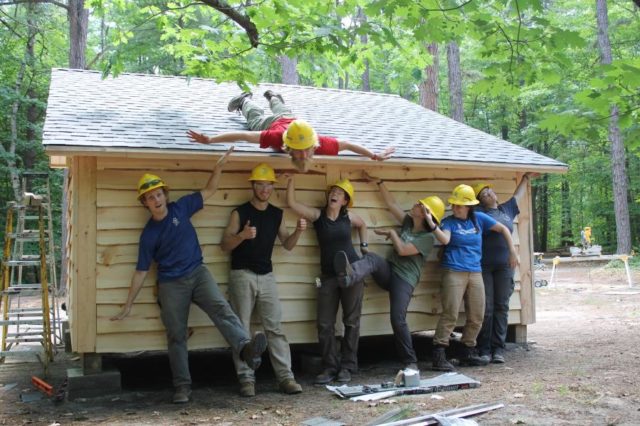
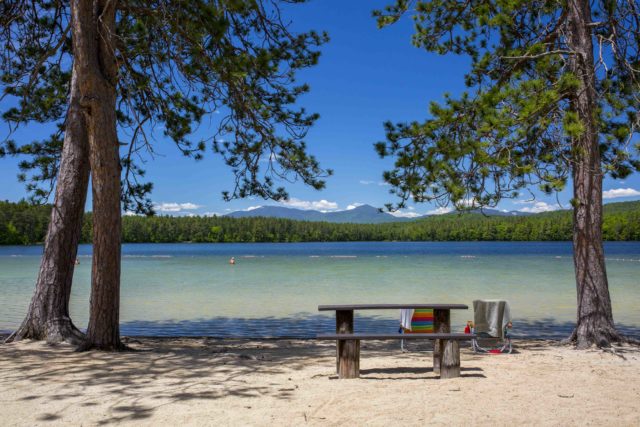
Reblogged from: http://lunchcakelunch.blogspot.com/

